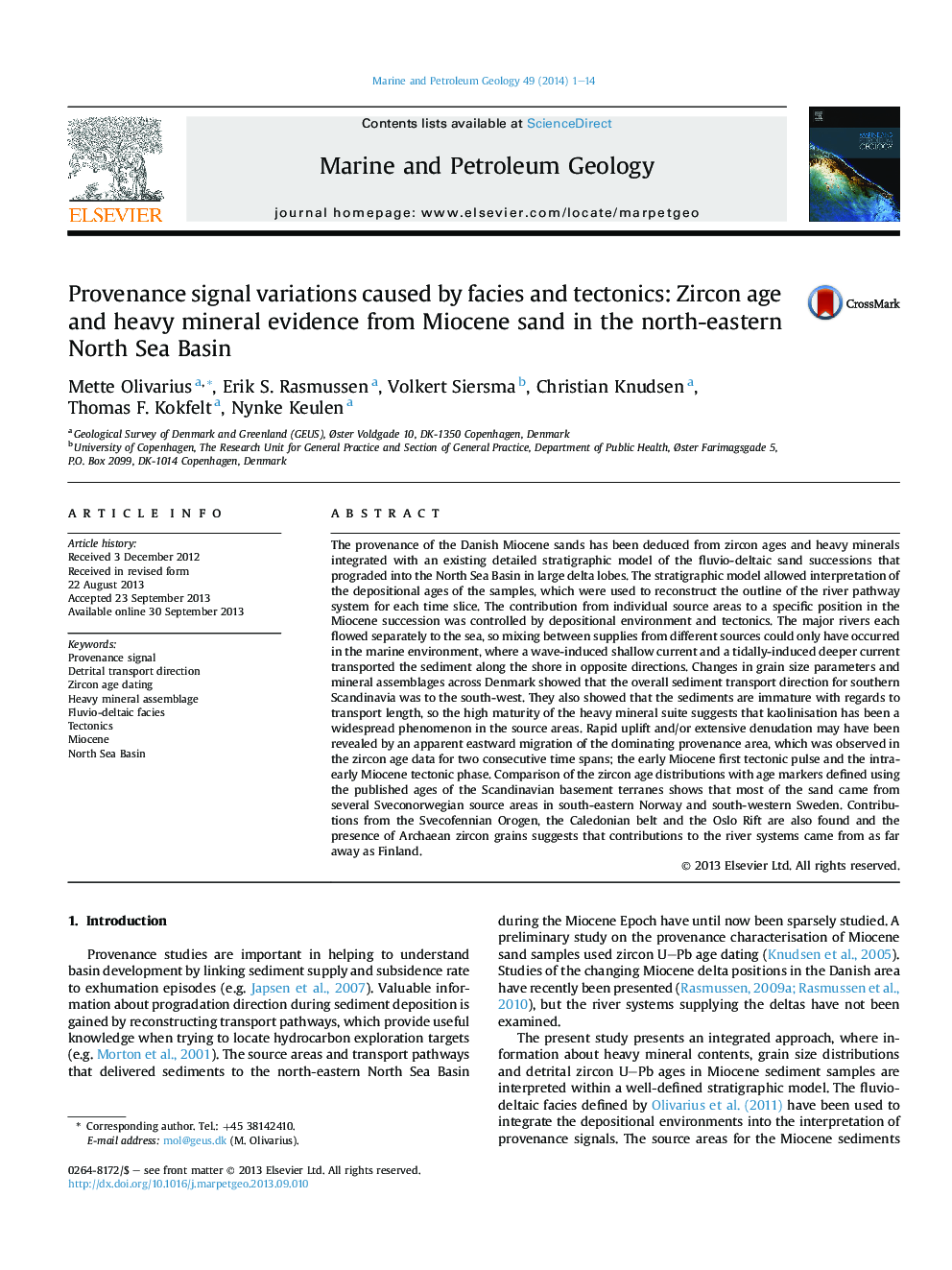| Article ID | Journal | Published Year | Pages | File Type |
|---|---|---|---|---|
| 4695786 | Marine and Petroleum Geology | 2014 | 14 Pages |
•Miocene sediment transport pathways are deduced by zircon ages and heavy minerals.•SE Norway and SW Sweden are the primary source areas of the eastern North Sea Basin.•The provenance signal is dependent on both tectonics and fluvio-deltaic facies.•Overall transport route is pinpointed by directional trends in e.g. grain shape.•Two periods of eastward migrating source rock uplift and/or denudation are proposed.
The provenance of the Danish Miocene sands has been deduced from zircon ages and heavy minerals integrated with an existing detailed stratigraphic model of the fluvio-deltaic sand successions that prograded into the North Sea Basin in large delta lobes. The stratigraphic model allowed interpretation of the depositional ages of the samples, which were used to reconstruct the outline of the river pathway system for each time slice. The contribution from individual source areas to a specific position in the Miocene succession was controlled by depositional environment and tectonics. The major rivers each flowed separately to the sea, so mixing between supplies from different sources could only have occurred in the marine environment, where a wave-induced shallow current and a tidally-induced deeper current transported the sediment along the shore in opposite directions. Changes in grain size parameters and mineral assemblages across Denmark showed that the overall sediment transport direction for southern Scandinavia was to the south-west. They also showed that the sediments are immature with regards to transport length, so the high maturity of the heavy mineral suite suggests that kaolinisation has been a widespread phenomenon in the source areas. Rapid uplift and/or extensive denudation may have been revealed by an apparent eastward migration of the dominating provenance area, which was observed in the zircon age data for two consecutive time spans; the early Miocene first tectonic pulse and the intra-early Miocene tectonic phase. Comparison of the zircon age distributions with age markers defined using the published ages of the Scandinavian basement terranes shows that most of the sand came from several Sveconorwegian source areas in south-eastern Norway and south-western Sweden. Contributions from the Svecofennian Orogen, the Caledonian belt and the Oslo Rift are also found and the presence of Archaean zircon grains suggests that contributions to the river systems came from as far away as Finland.
Graphical abstractFigure optionsDownload full-size imageDownload as PowerPoint slide
